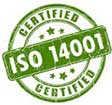To produce die cast parts to precise specifications, molten alloys must be metered and forced into a complex die cavity, at pressures up to 20,000 psi, in about a second. During that second, in an environment of vibration, high heat, fine dust and lubrication mist, a machine sensor must relay the exact position and velocity of the machine’s plunger at all points, to 0.001 in.
Reliable sensor feedback has been an industry challenge. CWM is now using linear digital position sensors in its aluminum die casting machines based on enhanced magnetostrictive technology. These new-generation transducers, encased in a specially sealed energy-absorbent package, have the ability to accurately adjust to vibration and temperature changes. The result is better parts, fewer rejects, and lower costs.








